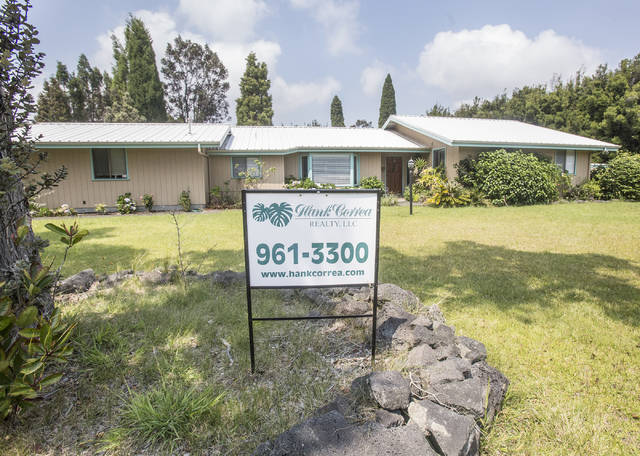With the most destructive phase of the Kilauea eruption seemingly over, some areas of the Big Island real estate market are in a stronger position than others.
“Well, Volcano’s dead,” said real estate agent Pat Halpern, bluntly summarizing the state of the market near the epicenter of Kilauea’s continual seismic activity.
For more than a month, Halpern said, no new home sales have been made in Volcano Village. Halpern said she has one Volcano property tied up in escrow, while a colleague of hers recently had another property in escrow cancelled when the buyers got spooked.
“I guess people have heard about all the earthquakes and the cracks in the road,” Halpern said. “We’re in a holding pattern until something changes.”
Volcano Village, located not far from Hawaii Volcanoes National Park, is wracked by nearly constant tremors from Kilauea summit, with daily collapse events releasing energy equivalent to a 5.0-magnitude earthquake. The incessant shaking has taken a toll on the village’s roads, with several cracks developing on Highway 11.
Halpern, who lives in Volcano, said she has heard few complaints from property holders about direct earthquake damage to their properties, but admitted that the quakes are a tough sell for prospective buyers.
While Volcano’s market was strong before the eruption, Halpern said she expects a downward adjustment in home prices once the market picks up again.
“Actually, I thought even before all of this that they were a bit over-valued,” Halpern said.
While Volcano’s real estate market is one of the hardest-hit, Puna District, where Volcano is located, has suffered less of a downturn than may be expected.
According to sales data, by the end of April there had been 18 more residential sales in Puna than the same point in 2017, an increase of more than 6 percent. However, by the end of June, that number had reversed, with 6 percent fewer sales than by the same point last year.
Despite this, the median sales price of residential properties in Puna remains more than 5 percent higher as of June than it did last year.
Halpern said many lava evacuees are choosing to resettle elsewhere in the Puna District. Areas such Hawaiian Paradise Park, Orchidland and Ainaloa are particularly active markets.
“We’ve had a lot of properties [in Puna] just sitting for months with no offers,” said C. Kapono Pa, president of Hawaii Island Realtors. “Some were unpermitted structures, others were just smaller single-family homes. But all of a sudden after the eruption, we got multiple offers on a lot of them.”
Pa said he expects that even as sales numbers increase in certain Puna communities, the median sale prices will decrease as time passes.
Pa predicted that eventually, Pahoa may become “the new Volcano Village,” attracting retirees and visitors alike with its close proximity to the lava flow.
Halpern and Pa both said several Puna evacuees are also searching for properties in lower-risk lava zones, although for many, communities farther north are likely out of their price range.
The median sales price for North Hilo residential properties this year to date has risen to $575,000, a nearly 60 percent increase from last year. South Hilo properties are marginally more affordable, with a median price of $349,750, only a 4 percent boost from 2017.
Both the number of residential sales and the total sold residential acreage in South Hilo this year are down from last year by 12-14 percent.
Meanwhile, North Kona’s residential sales volume, sales numbers and median prices are all up from last year.
Email Michael Brestovansky at mbrestovansky@hawaiitribuneherald.com






